It looks like you're using an Ad Blocker.
Please white-list or disable AboveTopSecret.com in your ad-blocking tool.
Thank you.
Some features of ATS will be disabled while you continue to use an ad-blocker.
6
share:
I was looking at the catalog of near by exoplanets and this one caught my attention. It is one of 3 potential habitable planets within the Giliese 667
triple star system.
phl.upr.edu...
It is I think the closest possible habitable planets with our galaxy being about 22 light years from our solar system.
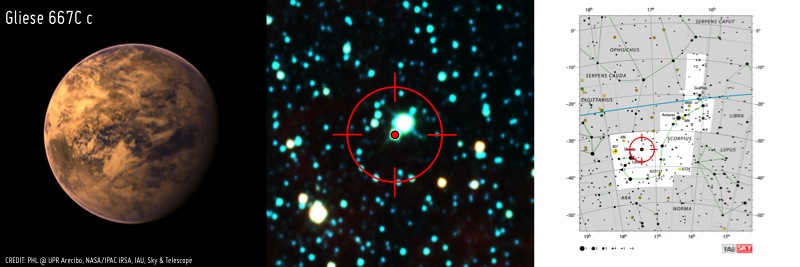
I started working on some ideas for a mission to the Giliese 667 star system. For obvious reasons a number no not yet existing technologies would be required to make it a practical reality. Even with these limits to consider I think it is a good topic for discussion.
Can we finally break the speed of light? Nasa breakthrough suggests Star Trek's 'warp drives' may not only be possible - but practical
Since NASA seems to think warp drive is possible I will start with this premise as a near future possible technology.
The other obvious limit to this being possible is the needed energy to generate the warp field. Antimatter has of course been discussed as well as obtaining energy from the vacuum itself. I think for practical reasons I would want to explore extracting energy from the vacuum. For the moment of course we do not possess even the technology to reach Mars in a practical time frame.
The best candidate so far is the FDR fusion drive which promises to make the trip to Mars in 30-90 days. This is a good start as it provides its energy while using very little mass conversion to achieve acceleration. It is clearly not enough for a star drive but with some type of space warping technology added to it perhaps it will become such a drive.
The next hurdle that comes to mind is the material making up the spacecraft and the ability of that material to heal itself. For this we will of course need to perfect a type of nanotechnology. Perhaps something based on carbon nano-tubes.
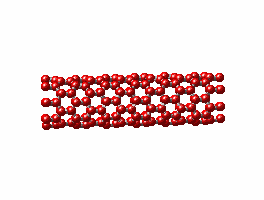
Some sort of material that is low in density and high in strength as well as having self healing properties will be needed for the material of the star craft. I know that NASA has put quite a bit of resources into this type of science so they see the benefit as well as I do.
I will post more of my thoughts on this in this thread. Perhaps with some thoughtful contribution from others this thread might evolve into something of a hopeful plan for such a excursion to explore our nearest habitable neighbor in the galaxy.
phl.upr.edu...
It is I think the closest possible habitable planets with our galaxy being about 22 light years from our solar system.

I started working on some ideas for a mission to the Giliese 667 star system. For obvious reasons a number no not yet existing technologies would be required to make it a practical reality. Even with these limits to consider I think it is a good topic for discussion.
Can we finally break the speed of light? Nasa breakthrough suggests Star Trek's 'warp drives' may not only be possible - but practical
Since NASA seems to think warp drive is possible I will start with this premise as a near future possible technology.
The other obvious limit to this being possible is the needed energy to generate the warp field. Antimatter has of course been discussed as well as obtaining energy from the vacuum itself. I think for practical reasons I would want to explore extracting energy from the vacuum. For the moment of course we do not possess even the technology to reach Mars in a practical time frame.
The best candidate so far is the FDR fusion drive which promises to make the trip to Mars in 30-90 days. This is a good start as it provides its energy while using very little mass conversion to achieve acceleration. It is clearly not enough for a star drive but with some type of space warping technology added to it perhaps it will become such a drive.
The next hurdle that comes to mind is the material making up the spacecraft and the ability of that material to heal itself. For this we will of course need to perfect a type of nanotechnology. Perhaps something based on carbon nano-tubes.

Some sort of material that is low in density and high in strength as well as having self healing properties will be needed for the material of the star craft. I know that NASA has put quite a bit of resources into this type of science so they see the benefit as well as I do.
I will post more of my thoughts on this in this thread. Perhaps with some thoughtful contribution from others this thread might evolve into something of a hopeful plan for such a excursion to explore our nearest habitable neighbor in the galaxy.
reply to post by angrymartian
Cool S&F Sir!
if they want a volunteer to a mission reach that planet i want be the first to sign up!
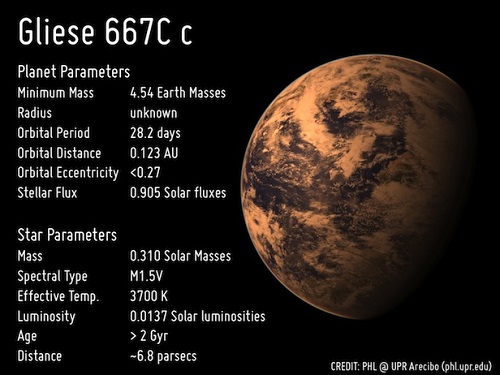
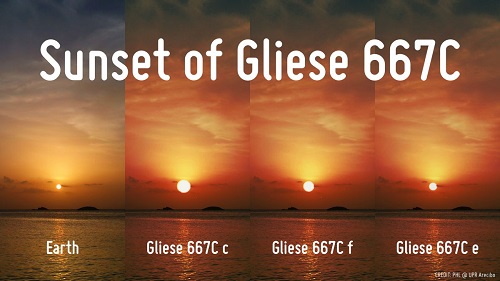
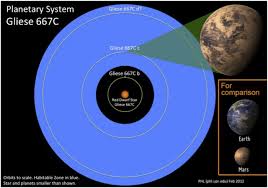

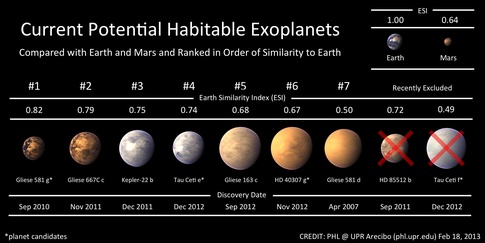
Cool S&F Sir!
if they want a volunteer to a mission reach that planet i want be the first to sign up!





reply to post by cheesy
I think a robotic mission is the only practical way to explore this star system at first. The lower mass and the lack of need for food, atmosphere recycling, and shielding to protect living occupants would be the deciding factors in the mission. We can't even organize the logistics of a round trip to Mars yet so I think a first trek with a robotic mission is a given.
The next hurdle as I see it is communication. We do not want to wait decades to have the ship arrive and then a few more to have a very long communication lag conversation with the ship. To solve this issue we would need to equip the craft with a communications system that has a quantum entangled cooper pair for near instant communication. See this reference. www.ncbi.nlm.nih.gov...
The ship would also need to carry the ability to build a Krasnikov tube once it arrived at Giliese 667. This would allow us to transit the distance in near instantaneous speed should the craft find that one or more the planets is habitable and not already occupied. See this resource for the Krasnikov tube concept: www.npl.washington.edu...
I think a robotic mission is the only practical way to explore this star system at first. The lower mass and the lack of need for food, atmosphere recycling, and shielding to protect living occupants would be the deciding factors in the mission. We can't even organize the logistics of a round trip to Mars yet so I think a first trek with a robotic mission is a given.
The next hurdle as I see it is communication. We do not want to wait decades to have the ship arrive and then a few more to have a very long communication lag conversation with the ship. To solve this issue we would need to equip the craft with a communications system that has a quantum entangled cooper pair for near instant communication. See this reference. www.ncbi.nlm.nih.gov...
The ship would also need to carry the ability to build a Krasnikov tube once it arrived at Giliese 667. This would allow us to transit the distance in near instantaneous speed should the craft find that one or more the planets is habitable and not already occupied. See this resource for the Krasnikov tube concept: www.npl.washington.edu...
I think the self-healing nanotechnology would be paramount, but how would a spacecraft withstand various space debris when going that fast. It's
something I've thought about for some time.
reply to post by angrymartian
I'm of the opinion, like with other planets in our own system, we'll need explore using robots first.
As far as spacecraft for manned missions, and self-healing skin, the simple solution to this would be to just build the spacecraft inside a man-made comet, or ball of water ice.
Water ice will 'self heal' with a little melting or compression.
The water ice could serve as reaction mass (fuel), plus shielding, plus water for drinking, and also as an oxygen and hydrogen source.
The greater diversity of usage you can employ for your materials on hand, the better usage you can get out of them.
Additionally, in building a spacecraft inside of an artificially made ball of ice, the spacecraft is camouflaged as a comet should approach on any interstellar system in the future detect potentially hostile intelligent aliens.
I'm of the opinion, like with other planets in our own system, we'll need explore using robots first.
As far as spacecraft for manned missions, and self-healing skin, the simple solution to this would be to just build the spacecraft inside a man-made comet, or ball of water ice.
Water ice will 'self heal' with a little melting or compression.
The water ice could serve as reaction mass (fuel), plus shielding, plus water for drinking, and also as an oxygen and hydrogen source.
The greater diversity of usage you can employ for your materials on hand, the better usage you can get out of them.
Additionally, in building a spacecraft inside of an artificially made ball of ice, the spacecraft is camouflaged as a comet should approach on any interstellar system in the future detect potentially hostile intelligent aliens.
reply to post by Druscilla
Starbound (2009)
(The second book in the Marsbound series)
A novel by Joe Haldeman
As soon as I read your post I said, "I read that book",
It would work!
"Their spacecraft is a well-stocked mini-mansion embedded inside a comet harnessed to an engine running on a mysterious, Others-derived energy source. En route, Carmen and company do their best to stave off boredom while speculating whether the Others will offer greetings or simply annihilate them."
That series is a good read by the way.
Mars series:
Marsbound (2008) Starbound (2010)
Earthbound (2011)
source: en.wikipedia.org...
Ok, I'm done.
Starbound (2009)
(The second book in the Marsbound series)
A novel by Joe Haldeman
As soon as I read your post I said, "I read that book",
It would work!
"Their spacecraft is a well-stocked mini-mansion embedded inside a comet harnessed to an engine running on a mysterious, Others-derived energy source. En route, Carmen and company do their best to stave off boredom while speculating whether the Others will offer greetings or simply annihilate them."
That series is a good read by the way.
Mars series:
Marsbound (2008) Starbound (2010)
Earthbound (2011)
source: en.wikipedia.org...
Ok, I'm done.
edit on 30-6-2013 by RUFFREADY because: (no reason given)
reply to post by RUFFREADY
Thanks. I'm unfamiliar with that author and have never read that series or any one of the books out of it.
I just thought water ice a logical and practical solution considering its relative abundance in the universe, our dependence on it, and everything it could be used for. Sufficient quantities would serve as decent secondary impact shielding and radiation shielding as well.
We could turn Europa into an interstellar spaceship factory.
Thanks. I'm unfamiliar with that author and have never read that series or any one of the books out of it.
I just thought water ice a logical and practical solution considering its relative abundance in the universe, our dependence on it, and everything it could be used for. Sufficient quantities would serve as decent secondary impact shielding and radiation shielding as well.
We could turn Europa into an interstellar spaceship factory.
reply to post by Druscilla
Yes, this is true (what you said) If you get a chance..pick those up (or you can read mine ) you would like them.
The main "hero' or character is a women. (by the way)
Yes, this is true (what you said) If you get a chance..pick those up (or you can read mine ) you would like them.
The main "hero' or character is a women. (by the way)
reply to post by iamhobo
Good question. I have given it some thought and I think that the space warping technology if it materializes will likely provide a type of shielding based on the warp bubble effect. Still self healing materials will be needed in order to achieve anything like interstellar transit. Again for practical purposes I would not want to be on that ship. It would have to be robot piloted and have pretty good intelligence to boot. Electrostatic repulsion for charged particle shielding would likely be required as well. Some type of Biefield Brown effect for charged particle repulsion perhaps.
Good question. I have given it some thought and I think that the space warping technology if it materializes will likely provide a type of shielding based on the warp bubble effect. Still self healing materials will be needed in order to achieve anything like interstellar transit. Again for practical purposes I would not want to be on that ship. It would have to be robot piloted and have pretty good intelligence to boot. Electrostatic repulsion for charged particle shielding would likely be required as well. Some type of Biefield Brown effect for charged particle repulsion perhaps.
reply to post by angrymartian
i am wondering if i am reach that planet i want to tell all human in earth how great that planet is..But..If i am on danger and need a fast backup How can we send a picture or video or voice that event the light need 22 years to reach scientist telescop on Earth..there is a lot off "unidentified Thing" that will barieer the signal..
i am wondering if i am reach that planet i want to tell all human in earth how great that planet is..But..If i am on danger and need a fast backup How can we send a picture or video or voice that event the light need 22 years to reach scientist telescop on Earth..there is a lot off "unidentified Thing" that will barieer the signal..
reply to post by cheesy
I think you missed the point of my previous post. Let me reiterate.
To be clear, quantum entangled communication pairs will be able to operate at near instant speed regardless of distance in time and space. Think faster than light walkie talkies.
I think you missed the point of my previous post. Let me reiterate.
The next hurdle as I see it is communication. We do not want to wait decades to have the ship arrive and then a few more to have a very long communication lag conversation with the ship. To solve this issue we would need to equip the craft with a communications system that has a quantum entangled cooper pair for near instant communication. See this reference. www.ncbi.nlm.nih.gov...
To be clear, quantum entangled communication pairs will be able to operate at near instant speed regardless of distance in time and space. Think faster than light walkie talkies.
reply to post by angrymartian
OMG i missed this Technology..
more "but" , But can other High Civilization Creature Sabotage This Signal?? Just Wondering..
To be clear, quantum entangled communication pairs will be able to operate at near instant speed regardless of distance in time and space. Think faster than light walkie talkies.
OMG i missed this Technology..
more "but" , But can other High Civilization Creature Sabotage This Signal?? Just Wondering..
reply to post by cheesy
It is impossible by its very nature to predict how a more advanced technological civilization might be able to interact with our most advanced technology. Quantum Entangled communications are in theory very secure since only entangled pairs can talk to each other.
It is impossible by its very nature to predict how a more advanced technological civilization might be able to interact with our most advanced technology. Quantum Entangled communications are in theory very secure since only entangled pairs can talk to each other.
Awesome thread angrymartian.
I do not have any ideas at this stage as i am still absorbing the contents of what you posted.
I think quantum communication will be in our near future. I have seen a study (some internet video, reliability questionable) where a separated a piece of DNA from a subject was taken hundreds of miles away and the photon particles observed. When the subject experienced pain the DNA observed from a distance would restructure the photon particles at the exact moment the subject experienced it.
I do not have any ideas at this stage as i am still absorbing the contents of what you posted.
I think quantum communication will be in our near future. I have seen a study (some internet video, reliability questionable) where a separated a piece of DNA from a subject was taken hundreds of miles away and the photon particles observed. When the subject experienced pain the DNA observed from a distance would restructure the photon particles at the exact moment the subject experienced it.
Anyone consider that this planet is nearly 5 times as big as Earth? Walking naked on that planet would be like walking with 4 more of you stacked on
top of you. Sure, you might survive, but walking will be damn near impossible. Especially if you spent the last 22 years in null gravity watching your
muscles atrophy.
reply to post by HauntWok
I have given this some thought as well. I think some type of exoskeleton suit would be required for human exploration. For robots of course this does not present a problem. The first mission would be for observation only and sending back data using the quantum entangled communications system.
I have given this some thought as well. I think some type of exoskeleton suit would be required for human exploration. For robots of course this does not present a problem. The first mission would be for observation only and sending back data using the quantum entangled communications system.
new topics
-
1 Billion dollars
General Entertainment: 4 hours ago -
London Christmas Market BANS Word ‘Christmas’
Social Issues and Civil Unrest: 6 hours ago -
Marvin Gabrion's sentence commuted by Biden
US Political Madness: 6 hours ago -
Parker Solar Probe is about to Kiss the Sun
Space Exploration: 7 hours ago -
Drones On Live Beach Cam New Jersey.
Aliens and UFOs: 9 hours ago -
Christmas Dinner ??
Food and Cooking: 10 hours ago
top topics
-
Merry Christmas !!
General Chit Chat: 13 hours ago, 14 flags -
Marvin Gabrion's sentence commuted by Biden
US Political Madness: 6 hours ago, 13 flags -
London Christmas Market BANS Word ‘Christmas’
Social Issues and Civil Unrest: 6 hours ago, 10 flags -
Christmas Dinner ??
Food and Cooking: 10 hours ago, 6 flags -
Drones On Live Beach Cam New Jersey.
Aliens and UFOs: 9 hours ago, 4 flags -
Parker Solar Probe is about to Kiss the Sun
Space Exploration: 7 hours ago, 4 flags -
1 Billion dollars
General Entertainment: 4 hours ago, 4 flags
active topics
-
-@TH3WH17ERABB17- -Q- ---TIME TO SHOW THE WORLD--- -Part- --44--
Dissecting Disinformation • 3803 • : MetalThunder -
London Christmas Market BANS Word ‘Christmas’
Social Issues and Civil Unrest • 29 • : Naftalin -
Merry Christmas !!
General Chit Chat • 14 • : KrustyKrab -
Can someone 'splain me like I'm 5. Blockchain?
Science & Technology • 95 • : cherokeetroy -
NYPD arrests migrant who allegedly set woman on fire on subway train, watched her burn to death
Breaking Alternative News • 43 • : xuenchen -
Marvin Gabrion's sentence commuted by Biden
US Political Madness • 6 • : Athetos -
F-18 shot down over Red Sea....by our own Destroyer?
Other Current Events • 19 • : matafuchs -
Parker Solar Probe is about to Kiss the Sun
Space Exploration • 7 • : Flyingclaydisk -
1 Billion dollars
General Entertainment • 5 • : Naftalin -
Christmas Dinner ??
Food and Cooking • 12 • : Naftalin
6
